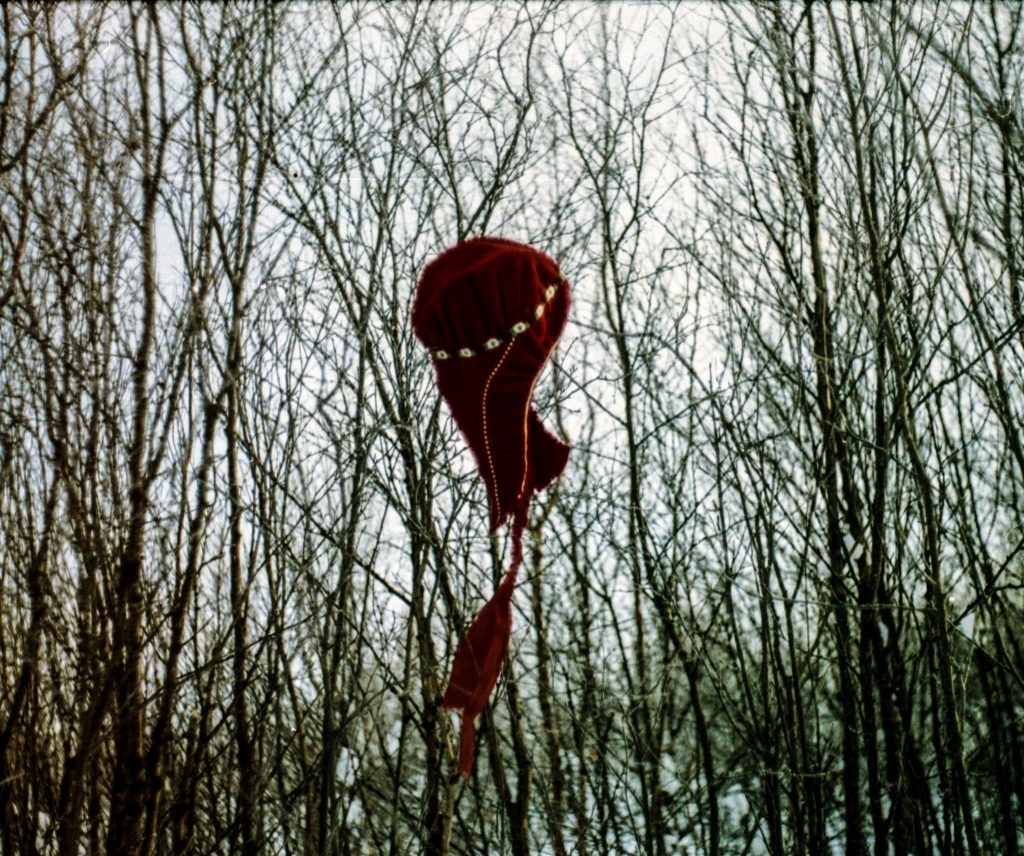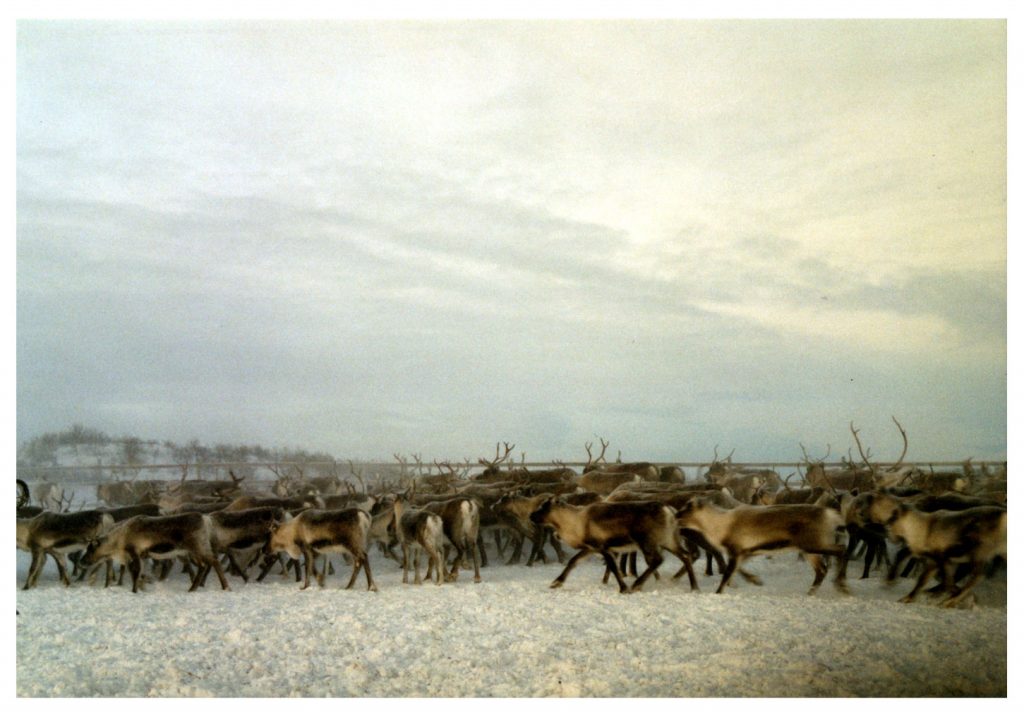The texts from this article appear in our IF publication which will be distributed freely at Institut finlandais starting from 6 September 2019.
Foreword by Johanna Råman
Institut finlandais’ fall program offers a kaleidoscopic view into Sámi cultural life. Through the gallery exhibition, the film programming, this booklet and other encounters, the Finnish Institute in France will bring forth contemporary voices and themes from Sápmi, the Sámi country. We want to be part of the movement for strengthening and promoting the status and visibility of this vibrant indigenous nation, its language and its culture outside of our borders. Finnish schools do a regrettable job of transmitting knowledge about the culture and the history of the only recognised indigenous people of the European Union, and one can only hope that our media did a better job in bringing forth the diversity of our country. The program at the Finnish Institute and this booklet are the fruit of a continuous dialogue with the Sámi community.
Sámi culture offers us many wisdoms and ways of life that we ought to heed. One of these is their sustainable way of living with the unique, but fragile northern environment. This bears a particular weight as the climate change is adding pressures to land use of arctic areas. The survival of the Sámi culture and way of life must be secured, and its status must be improved. One of the films shown at the Institute this fall, Marja Helander’s Eatnanvuloš lottit (Birds in the Earth) examines the conflict between the Sámi way of life and modern society. Questions of land ownership, consumerism, and people’s relationship with nature are central to this work.
It is a great joy and honour to present to the Institute’s audience with a broad range of high quality, contemporary Sámi culture. In Finland, Sámi culture is thriving and increasingly visible in the media, in the fields of art and societal discourse in general. Sámi culture captures our interest right now, and for a reason. Our respect and understanding of this unique indigenous culture begin when our knowledge of it increases.
Johanna Råman, Director of the Institut finlandais
Editorial by Pirita Näkkäläjärvi
In the spring of 2018, The Finnish Cultural Institute for the Benelux invited me to participate in the Remembering 1918 event in Brussels, where I organized an audience tour on the topic of the Sami at the House of European History. Although the museum does not house one single Sámi-related object, I was able to create a tour by stopping at certain objects of the exhibition – certain maps, statues, photographs related to the topic of colonialism, and the United Nations Declaration of Human Rights – and linking them with the history of the Sámi.
The tour finished, I was inundated with questions from the audience. One comment that has stayed with me was from a Finnish man who said he had learned more about the Sámi in forty-five minutes than in his entire fifty-year life – laughing that he had had to come all the way to Brussels for it.
“The Sámi community and culture are vibrantly alive. The desire and the will to keep the culture and language alive and to transmit them to the next generation are strong.”
I hear comments like this at work, too. My co-workers often tell me I am the first Sámi they have ever met, or that they were not told anything about the Sámi at school.
What do I want to tell about my people, then?
The Sámi community and culture are vibrantly alive. The desire and the will to keep the culture and language alive and to transmit them to the next generation are strong. Yet, the Sámi people and culture are constantly forced to fight for their survival. The structures of society – school, for example – only reflect the Finnish world view, despite the fact that the state of Finland has been built on the lands of two people, the Finns and the Sámi. In addition, the institutions that support Sámi culture remain chronically underfunded.
For us, everything depends on the continuous transmission of our traditions, because the traditions hold up our culture and communities. Our traditions are part and parcel of our core values. The word ‘traditions’, however, does not refer to objects gathering dust in a museum, but to something that changes as the world changes – without ever losing its essence. The living duodji, or Sámi craft tradition, our traditional livelihoods such as reindeer herding and fishing, the tradition of joik, and all three Sámi languages spoken in Finland are all extremely important to the community.

“Nine different Sámi languages are spoken in Sápmi. Three of them – North Sámi, Inari Sámi, and Skolt Sámi – are spoken in Finland. All nine Sámi languages are under the threat of extinction.”
The Sámi are an indigenous people who have lived on the Sámi lands long before the state borders were drawn. Sápmi, the homeland of the Sámi people, is a vast territory, stretching from the Kola Peninsula to mid-Norway and -Sweden. The borders between Finland, Sweden, Norway and Russia, however, have broken Sápmi into four pieces.
Approximately 10,400 Sámis live in on the Finnish side. The number of Sámi living in Finland is quite precisely known thanks to a special census of the Sámi people conducted in 1962. The project was not finished in the other Nordic countries. It is estimated that approximately 50,000-65,000 Sámis live in Norway, 20,000-30,000 in Sweden, and about 2,000 in Russia.
Nine different Sámi languages are spoken in Sápmi. Three of them – North Sámi, Inari Sámi, and Skolt Sámi – are spoken in Finland. All nine Sámi languages are under the threat of extinction. The speakers of different Sámi languages are able to communicate with each other in varying degrees. Hailing from the opposite ends of Sápmi, the speakers of South Sámi and those of Kiltinä Sámi have difficulty understanding each other’s languages; the speakers of neighbouring Sámi languages such as North Sámi and Inari Sámi, however, are able to gulahallat – to communicate with one another – without no trouble at all.
The Sámi are the only recognized indigenous people of the European Union. In Finland, the indigenous status of the Sámi is recognized in the constitution. In Finland, from 1995 the Sámi have had the right to maintain and develop their language and culture as an indigenous people. The Sámi people are represented by their own parliaments – Samediggi – in Finland, Norway and Sweden.
Yet the rights of the Sámi are not fully respected in the Scandinavian countries or in Russia. The Sámi do not have the right to determine who belongs to the Sámi people; in Finland, for example, it is the Supreme Court that makes that determination. The agreement on fishing on River Teno was drafted by Finnish and Norwegian government officials; the Sámi were not invited to participate in the process. As a consequence, Sámi methods of salmon fishing, a traditional livelihood of the Sámi, were reduced by 80 per cent while salmon fishing by tourists was reduced only by 40 per cent. The appeals by Sámi and other locals went unheard once again when the Regional Council of Lapland decided to continue the plans for the Arctic railway. If carried out, the railway drafted in these plans would split six North Sámi, Inari Sámi and Skolt Sámi herding districts and would deliver a deathly blow to reindeer herding in these communities.
Of all the Scandinavian countries only Norway has ratified the ILO treaty number 169 of the Human Rights of Indigenous People. In Finland and in Sweden the governments have been delaying the ratification on the pretext of further investigation on the prerequisites of the ratification.

The problems of the Sámi always stem from the fact that others know nothing about them. The ideas that the majority has about the Sámi are dominated by stereotypical representations that originate from the entertainment industry or from the commercial “Lapp” activities to which ski hotels treat their customers.
These days the old stereotypes are flanked by new misinformation which paints a picture of querulous Sámi who are quick to anger and easily feel victimized, whose demands are endless and who oppress their “own minorities”. Even government officials have readily adopted this new stereotype, which is slowing down the development of Sámi rights in Finland. The new stereotype is also contributing to the idea that the Sámi are not capable of governing their own lands, but, if left unsupervised by the authorities, they will overfish the rivers empty and overgraze the mountains bare.
“Art is a wonderful path to a deeper understanding of the Sámi culture.”
Western societies have a great deal to learn from the Sámi, who to this day continue to live in a close relationship with nature. Sámi philosophy is based on the idea that one can take only what one needs from nature. We leave no traces on the land. It is our responsibility to make sure the next generation is able to continue to live off the traditional livelihoods. The Sámi are also needed in the struggle against climate change. The Sámi already see the effects of it in their everyday lives and livelihoods and could be in the forefront with the researchers developing ways to address climate change.
Art is a wonderful path to a deeper understanding of the Sámi culture. The field of Sámi art is rich and covers a variety of genres from music to visual arts to video art. Sámis are also experimenting with the boundaries of art; for example, there is a debate within the community about the place of art inspired by duodji, Sámi crafts, in the field of art.
Although the mainstream media provides very little information about the Sámi, Sámi media broadcast in Finnish, Swedish and Norwegian, thus, offering a way to explore topics that matter to Sámi communities. There are also more and more Internet blogs that describe Sámi life, treat current topics and straighten out misconceptions. Hashtags #sapmi, #gakti, and #duodji provide an instant doorway to the life of the Sámi. Every new friend of Sámi culture is welcome!
Pirita Näkkäläjärvi, Business Trading Advisor at PwC
—
Pirita Näkkäläjärvi is a Sámi and a cultural, media and finance professional. She comes from Inari and is a native speaker of North Sámi. Elected Sámi of the Year in 2017 in Finland, Näkkäläjärvi has worked incessantly to improve the visibility of the Sámi in the media and to advance Sámi rights in Finland. Näkkäläjärvi is an active participant in social debates, especially on the social media. She reformed the Sámi language media in Finland as the head of the Sámi department of the Finnish National Broadcasting Company Yle in 2012-2017. She was a member of the board of the Sámi parliament in 2012. Presently Näkkäläjärvi lives in Helsinki and works as a Business Trading Advisor at PwC. Her prior engagements include finance and strategy positions at Merrill Lynch in London and at Nokia, Booz & Company, Metso and Strategy& in Finland.
Translation: Janna Jalkanen.
